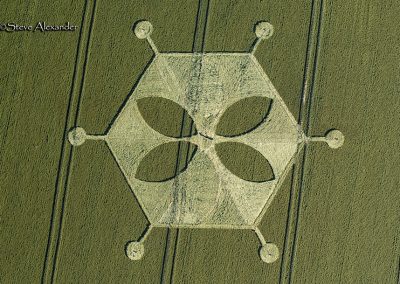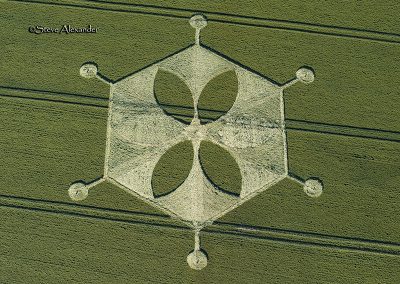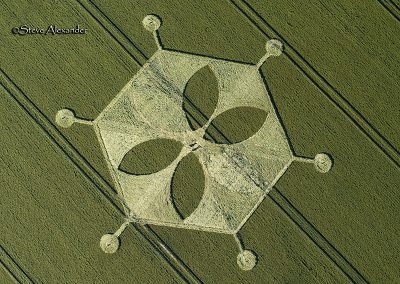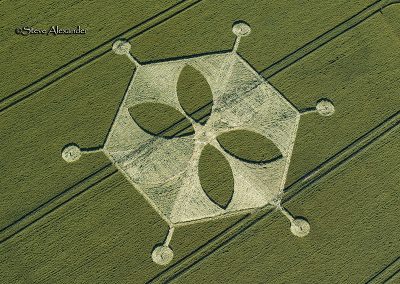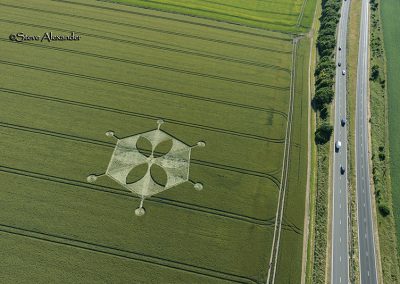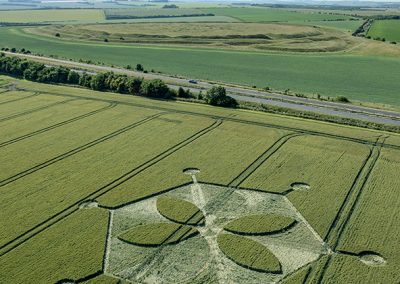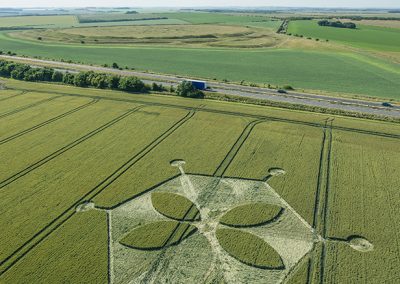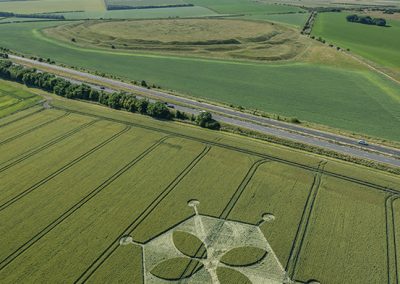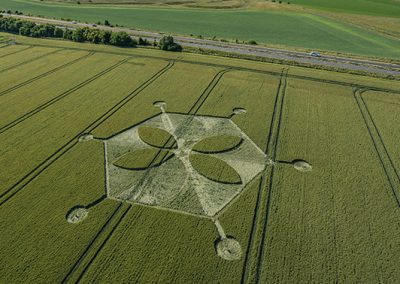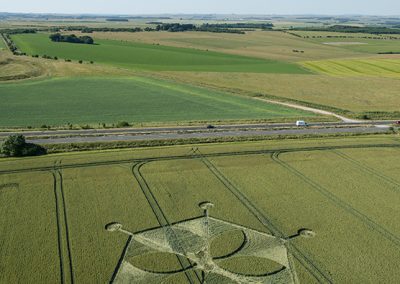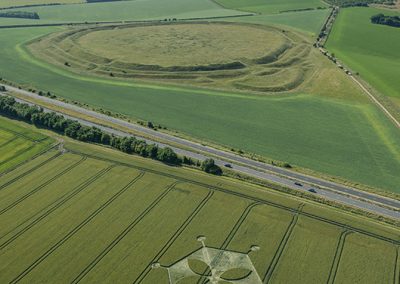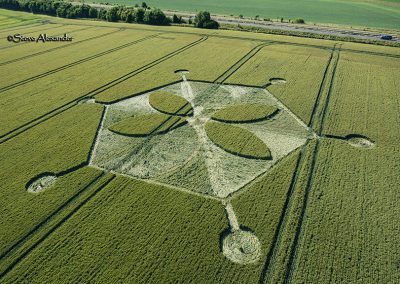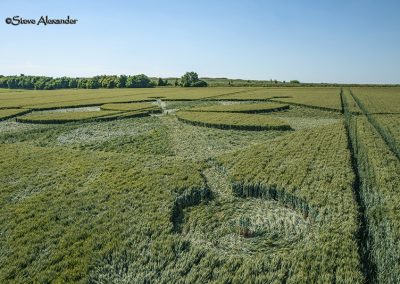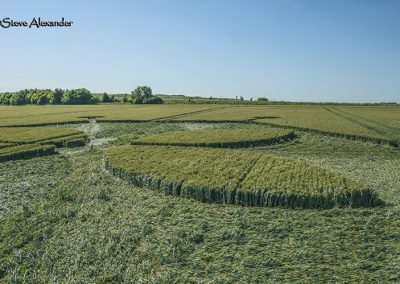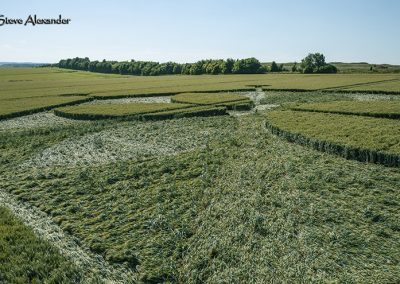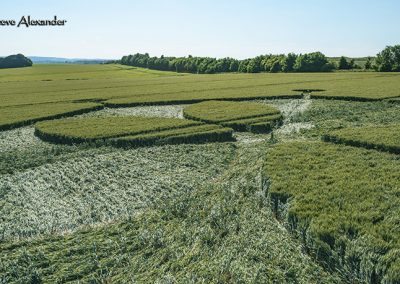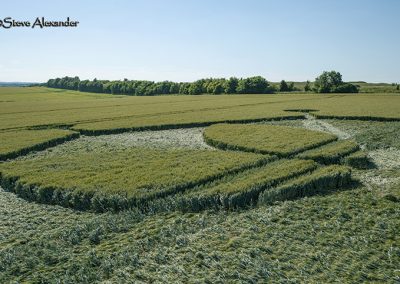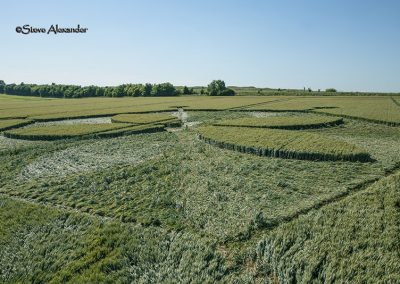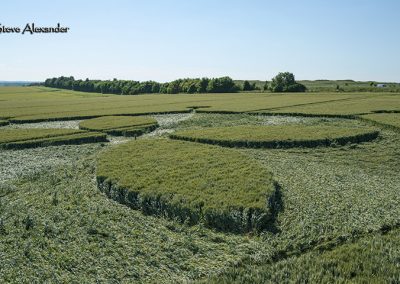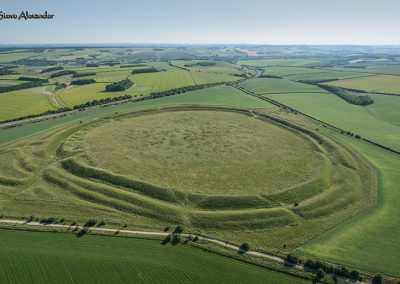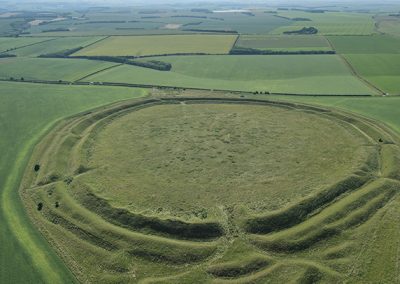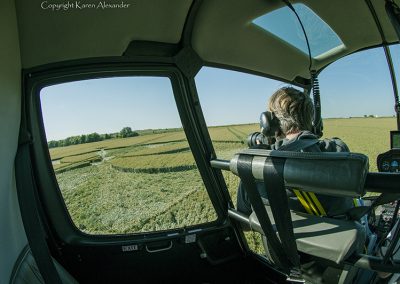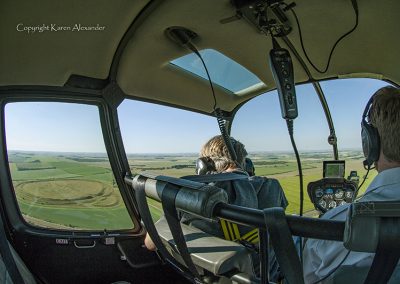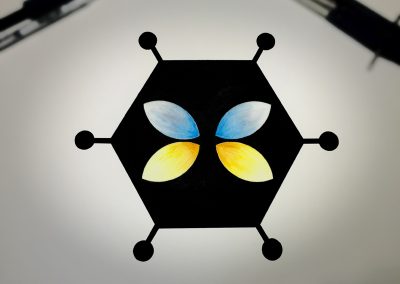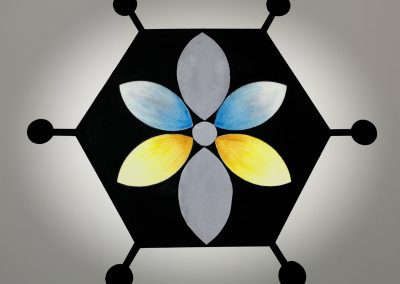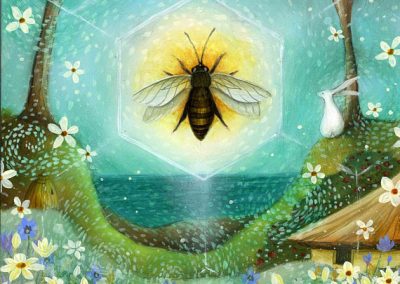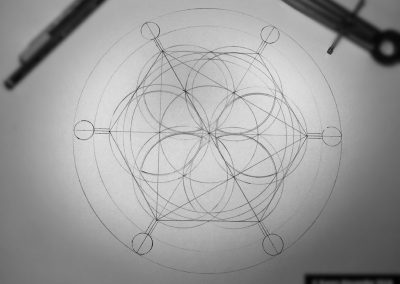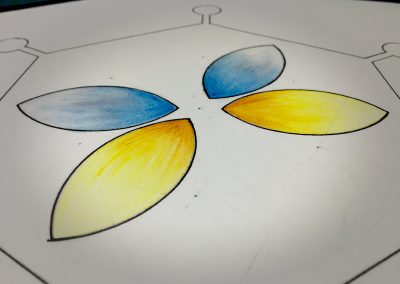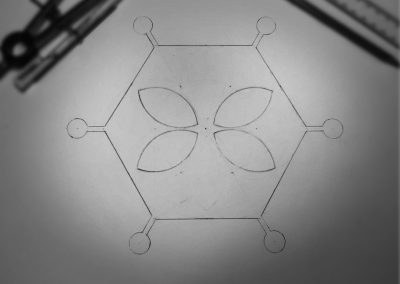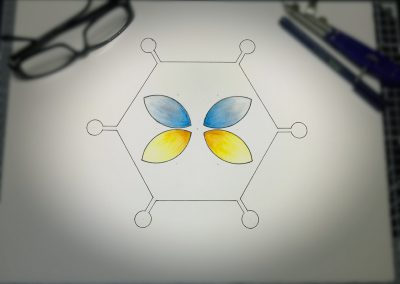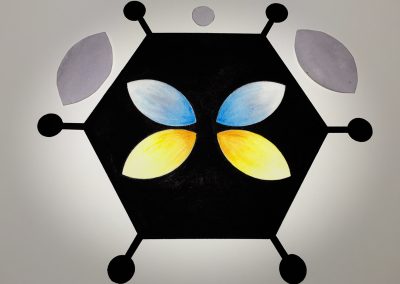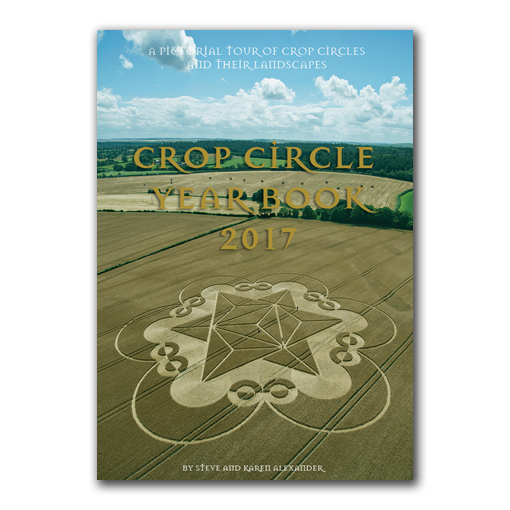Yarnbury Castle, nr Steeple Langford, Wilts.
Detail: This circle was reported late in the day on Sunday the 24th of June just south of the A303 at Yarnbury Castle (hillfort). The circle measures approximately 200ft and is in a field of maturing wheat. As far as we are aware the farmer has not given permission for any visitors to this circle, so please stay out of the field unless you have express permission from the farmer.
Location: We have had circles at Yarnbury Castle before, in differing fields around the hillfort. Yarnbury Castle is a huge Iron-Age circular hillfort (it covers over 28 acres) and is just a few miles west from Stonehenge. Unlike many other similar earthworks, Yarnbury Castle is on private land and cannot be visited by the public, so please do not wander onto the site. You can read more about Yarnbury Castle here.
Design & Symbolism: This design is based on six-fold geometry, a set of four standing petal-shapes sit within a hexagon, which in turn has six arms each with a small circle at the end. In the laid crop, one can also see two further flattened petal shapes and a small swirled circle at the centre – it definitely looks like a honey bee in a hexagonal honeycomb cell. The bee has been part of the canon of human symbolism for millennia, associated with community, industry and common goals. In Ancient Egypt, the bee was said to have been formed form the tears of Ra, the sun god, and is connected with divinity, the sun, warmth and light. It also has a long connection to royalty, with the bee being the symbol of the King of Lower Egypt itself. The produce of the bee was seen as sacred – honey, mead and royal jelly – it’s wax used for the creation light. Bees have also been used been associated with immortality and resurrection (regeneration) and were used in the insignia of the ancient Merovingian Kings. Freemasons also frequently use the hive and the bee as symbols of regeneration, wisdom, industry and obedience. Sadly in our modern world, the humble and noble bee is fast becoming endangered.
A little synchronicity: I keep a personal art journal, which as well as functioning as a journal of events also allows me to collect images and other ephemera that are personally meaningful to me in once place, whether that’s paintings, poetry, quotes, books, dreams, photos etc. For the Summer Solstice I found a lovely picture called ‘Summer Solstice’ by the English artist Amanda Clark – it features at it’s centre a honey bee in a hexagon of golden, sparkling sunlight – it’s a lovely image. So imagine my surprise when I saw this crop circle of a honey bee in a hexagon, appearing shortly after the Solstice and only a few miles from Stonehenge where the largest celebration of the Summer Solstice takes place each year – it was as spooky as it was lovely. These kinds of stories seem to abound around the crop circle circles and are part and parcel of the fabric of the phenomenon and our relationship to it. You can see the painting in the Geometry Gallery below, along with my painting and drawings of the formation.
Visiting: This crop circle has now been harvested.
Visiting the Circles? If you are thinking of visiting any crop circles this summer, please read our Visiting the Crop Circles section. It’s full of useful information and etiquette for visiting the countryside and the crop circles. Please remember that you should not enter any fields without the express permission of the farmer.
Click here for Copyright Information about the reproduction of images on this website.
Please Help to keep us Flying in 2018: If you have enjoyed looking at our pictures and information please consider making a small donation to keep us flying. There are so few of us left regularly recording the circles it’s really important that we continue. And while some now use drones to record the circles, it is important that there are still images taken from aircraft where the best quality camera equipment can be used and images that include the broad vista of the landscape can be taken. This kind of photography is expensive and it gets harder with each passing year to raise the funds we need to continue our work, but if everyone who regularly looked at this website made a small donation we would meet the funds we need. You can make a donation here.
NOTE: Some of the images below are beautiful landscape scenes. Click on each image to enlarge them and see the whole picture.
Image Licencing
We can supply high resolution images of many of our photographs and the sky is the limit as to what they can be used for! Choose from our extensive library or contact us to commission aerial photography for your project.
Geometry Gallery
Simplicity can easily disguise great beauty and in the case of this crop circle it was very true. Six circles are placed equidistantly around the perimeter of a seventh (all the same diameter) this gives us the basic pattern used to create the petals. Enclose these circles and we create the hexagram. There is, of course, Euclid’s second theorem in the relationship between central circle and the one contained by the hexagram. It’s the nice correspondences here that make this formation so satisfying, six-fold geometry has such elegance and economy – one could look at the underlying correspondences for days.
In addition to the standing and flattened parts of this design, the laid crop also plays a part. It looks kind of odd at first to see just four standing petals, when there is clearly room for six. But on closer inspection we see that the ‘missing’ two petals are drawn in the laid crop, making this formation look more like a bee than a flower (or perhaps both as they seem to belong to one another). When I decided to paint this formation I decided to stick to the tradition of showing flattened crop in black, but afterward, I cut out and painted the two extra petals and the a small circle to represent the swirled circle at the centre of the formation. I placed these on the painting and photographed them to show how these laid parts changed the aesthetic of the design.
Six is the number of order, structure and function and its association with the bee is obvious. The bee uses the least amount of raw material to create the largest capacity storage space, when employing the hexagon in the hive. It is also one of the so called ‘Perfect’ numbers as it is the sum of all its divisors. Six is one of the most common numbers used in crop circle design and geometry.
As mentioned above, see the gallery below for Amanda Clark’s beautiful ‘Summer Solstice’ painting. You can see more of Amanda’s amazing work on her website www.amandaclarkartist.co.uk


